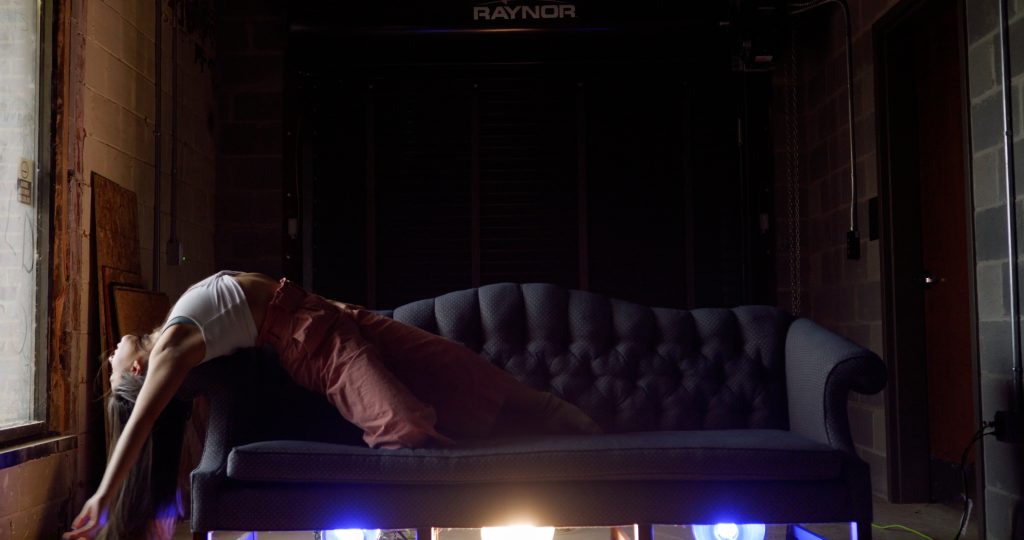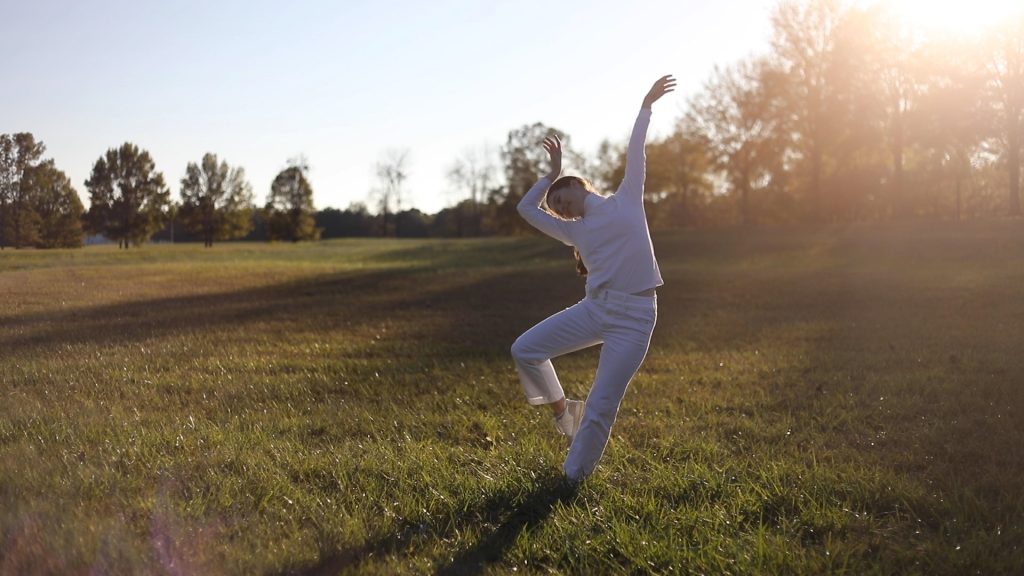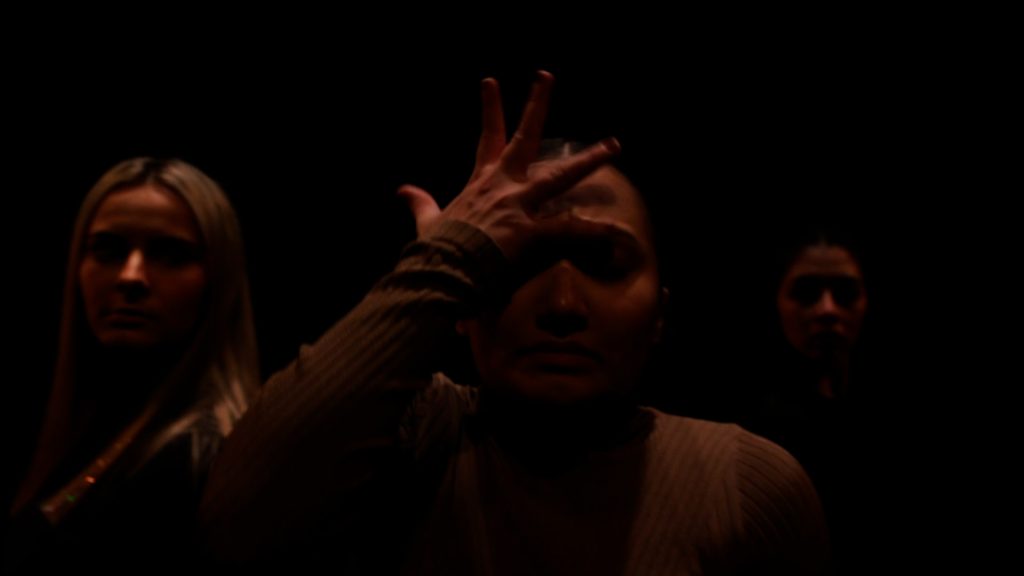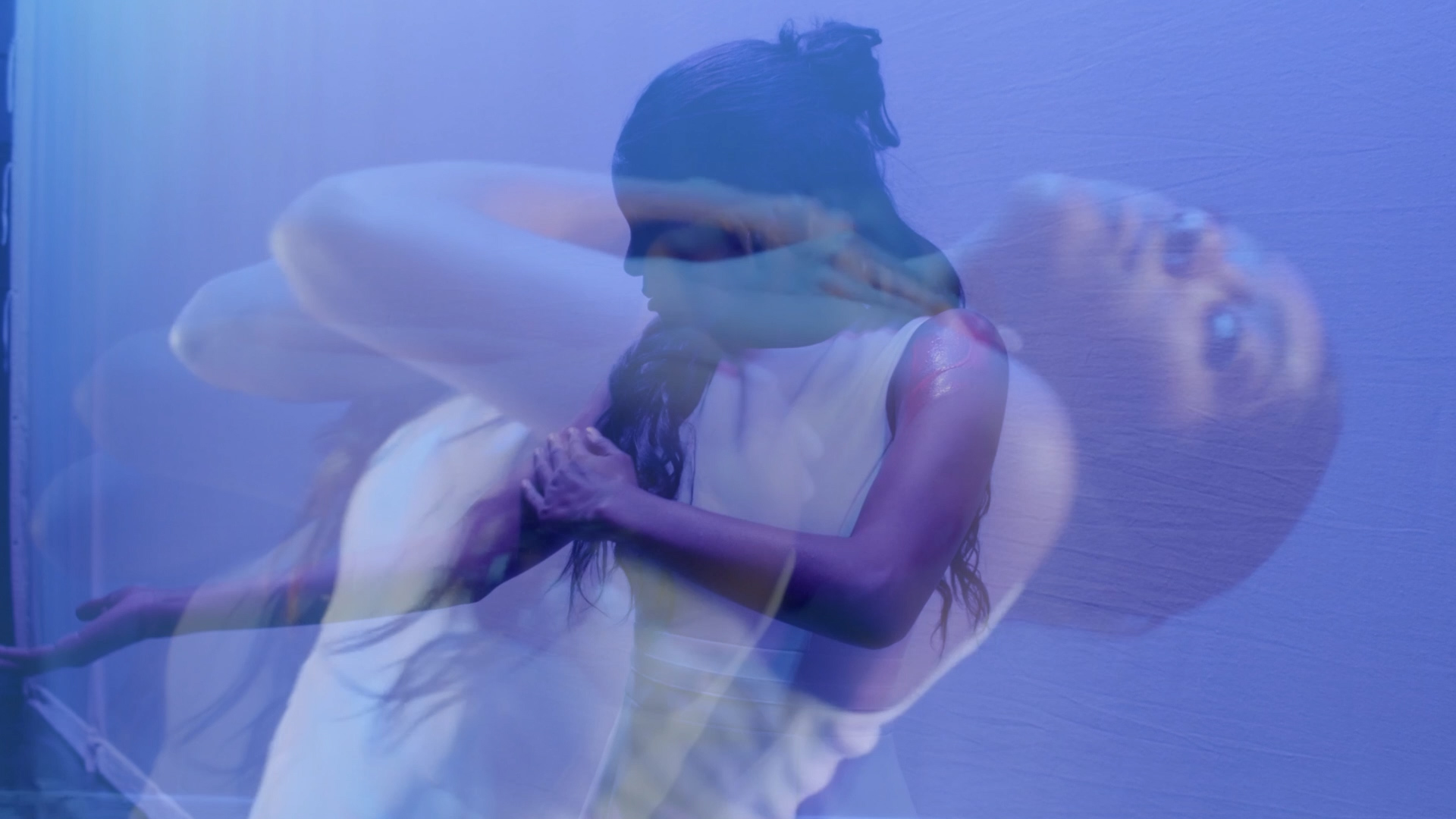The Dance Alabama Film Festival (DAFF) recently held it seventh annual festival at the Bama Theater on February 15, 2023. A student-led organization, DAFF fosters artistic collaboration between dancers, choreographers, composers, and cinematographers to create dance films. This year’s festival featured nine new short films: “Duality,” “Ruminate,” “Rose Alert,” “Just a Thought,” “Stuck in Reverse,” “Bridge,” “Starting Over,” “A Language of Its Own,” and “Contrary.”
The nature of screen dance often allows for a greater exploration of choreographic subtly. Unlike concert dance, screen dance is not confined to the boundaries of a proscenium setting. Choreographers and filmmakers are able to focus on details that would normally be lost within a live performance. The most minute of movements can suddenly be amplified to the extent of occupying an entire movie screen. The medium of film offers unique creative avenues to choreographers. This often drives works towards themes that can be more eloquently explored in film such as internalized struggles within one’s own consciousness.

A strong recurring theme throughout the festival lineup this year was internal conflict within an individual. Several films, such as “Duality,” “Ruminate,” “Just a Thought,” and “A Language of Its Own,” featured an individual surrounded by other dancers. From my perspective, this structure translated into a representation of an internal struggle. This was often choreographically expressed by having the dancers encircling the individual with intensely overwhelming gesturing while the individual remained motionless. In the case of “Duality,” these gestures were often unsynchronized with the dancers each performing a unique set of gestures. In contrast, “Ruminate” featured highly synchronized gesturing. While each of these films approached this motif in different ways, the effect of viewing these sequences both furthered the internalized nature of these films. The visual contrast between these two films—which were shown in sequence—sparked the question: how does one externalize internal struggles through dance? The unsynchronized patterns of “Duality” left me the impression that the mind was embroiled in chaos. On the other hand, the synchronization of “Ruminate” suggested that there was an active conflict occurring internally between two opposing forces. Despite both of these films using similar choreographic structures and themes, their individual executions allowed for different narrative arcs to play out.
Musical scores also helped emphasize the theme of internal conflict. In “Just a Thought,” the score featured an overlay of spoken word which grew increasingly disjointed throughout the film. By the end of Just a Thought, the speaker had gone from using full sentences to repeating the single word “can’t.” The repetitive and fragmented nature of the score emphasized the struggle of intrusive thoughts. The choreography also reflected the repetitiveness of the score by utilizing a concentrated movement vocabulary that was also broken down into smaller pieces throughout the film. By the end, the phrase had been reduced down to singular gestures so that within the vocabulary of the piece was the choreographic equivalent of “can’t.” The score and choreography were a harmonious demonstration of the consuming and debilitating nature of intrusive thoughts.

Dance films enable artists to craft performances in nontraditional spaces. Without the need to accommodate an live audience, small spaces such as a bathroom can become performance spaces. In the film “A Language of Its Own” (possibly alluding to the title of Virginia Woolf’s 1929 feminist essay, A Room of One’s Own) the audience observes an individual going through their daily routine while surrounded by five dancers who repeat a series of intricate gestures based off of the movement patterns of the individual. The seemingly insignificant and mundane patterns of the individual are echoed and amplified by the dancers. One particularly striking example of this occurs when the individual is driving to work. The shot changes from an up close-up angle shot of the individual’s face with hands on the steering wheel to showing the car pulling out of a parking lot with hands hanging outside of the car window that are articulating the unconscious tapping of fingers on a steering wheel. Later, the film moves into an office space where the dancers continually trace the frames of the desktop computers while the individual works. In one final moment, the dancers have broken out of their repetitive rhythms and have assumed casual positions of working next to the individual. They all gaze at her, but when she looks back, they ignore her and resume working. “A Language of One’s Own” is concerned with exploring the often -overlooked patterns of the mundane. The setting in “A Language of One’s Own” directly impacts the choreographic structures of the performance and enables the viewer to questions where dance might occur in their own daily routines.
I am of the opinion that screen dances are most effective when they push the boundaries that live dance works are often tied to. Live works and films both have their own respective constraints and advantages. Knowing what those are for each medium and how to manipulate them is a key aspect to any dance piece. When a nontraditional medium is utilized, there should be a specific and direct reason for that artistic choice outside of just plain novelty. The screen dances presented at the 2023 Dance Alabama Film Festival used the medium of film to explore how internalized emotions, struggles, and patterns can be manifested through dance.

The seventh annual Dance Alabama Film Festival was presented on February. 15, 2023, at the Bama Theater. DAFF showcased a collection of films created by students from the Department of Theatre and Dance, Journalism and Creative Media, and the School of Music at the University of Alabama. The festival director was Taylor Binkley. The co-assistant directors were Ally Leblanc and Liz Pack. The DAFF faculty advisor is associate professor Rebecca Salzer. The films presented were: “Duality” (choreography and cinematography by Samantha Atkinson), “Ruminate” (choreography by Taylor Binkley and dancers, cinematography by Carson Thorpe), “Rose Alert” (choreography by Laura Martinez-Agular, directed by Laura Martinez-Agular and Grace Worley), “Just a Thought” (choreography and cinematography by Sarah Osucha), “Stuck in Reverse” (choreography by Ally Leblanc, cinematography by Don Mccleod), “Bridge” (choreographed by Katy Weske and dancers, directed by Katy Weske, cinematography by Eric Traugott), “Starting Over” (choreography by Anna Gardner Herren and dancers, cinematography by Ginny Gray), “A Language of Its Own” (choreography by Liz Pack and Mary Payne, cinematography by Jocelyn Claborn and Liz Pack ), and “Contrary” (choreography and cinematography by Carter Atkinson).

